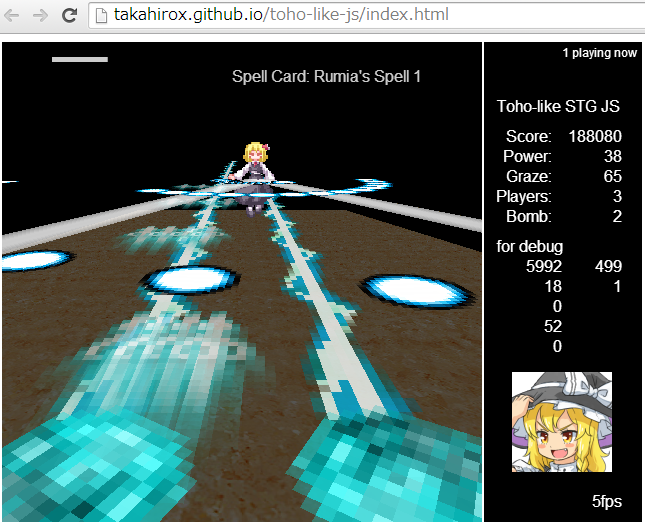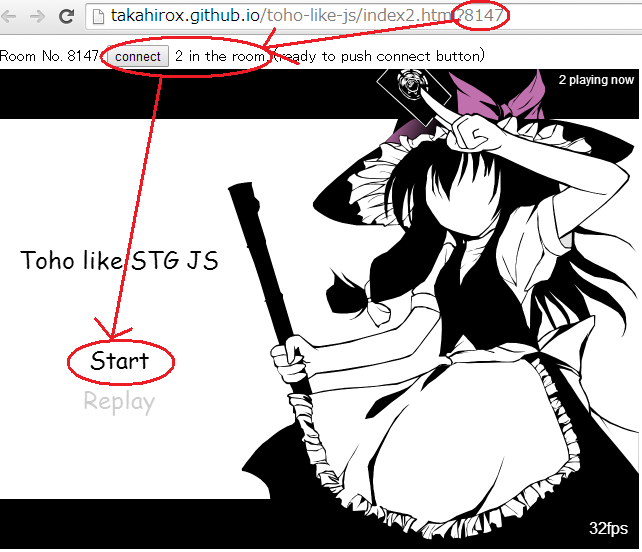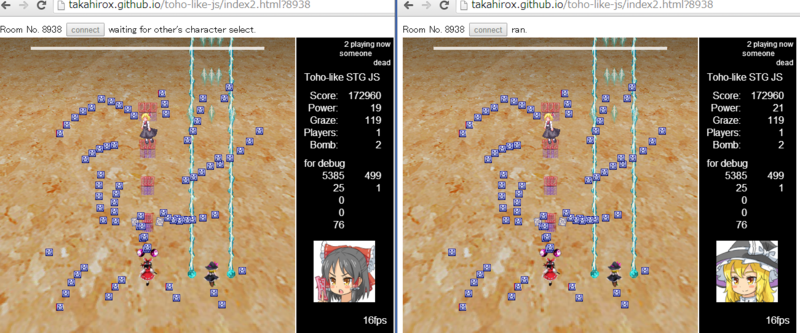Memo: How to build MySQL
Memorandum for myself.
Install Lubuntu into Netbook(eeePC 1000H) via USB
Universal USB Installer
http://www.pendrivelinux.com/universal-usb-installer-easy-as-1-2-3/
Lubuntu image
Get, build, and test MySQL
Get source code
http://dev.mysql.com/doc/internals/en/getting-source-tree.html
First, I needed to register and set ssh public key.
https://launchpad.net/people/+me/
ssh-keygen -t rsa # then, copy ~/.ssh/id_rsa.pub to https://launchpad.net/people/+me/ # after that run the following command bzr launchpad-login <id>
Then got the source code.
bzr init-repo $HOME/mysql-server cd $HOME/mysql-server bzr branch lp:mysql-server/5.7 mysql-5.7
"bzr branzh" somehow wasted huge memory, so I increased the memory of VM I worked on as workaround.
How to build
http://dev.mysql.com/doc/internals/en/cmake-howto-quick.html
# first, needed to install some packages sudo apt-get install g++ sudo apt-get install libncurses5-dev sudo apt-get install bison # then make cd $HOME/mysql-server/mysql-5.7 mkdir bld cd bld # -DDOWNLOAD_BOOST and -DWITH_BOOST were necessary in this mysql-server version. # And add -DCMAKE_BUILD_TYPE=Debug for debug configuration cmake .. -DDOWNLOAD_BOOST=1 -DWITH_BOOST=/tmp/boost make
References
https://dev.mysql.com/doc/internals/en/index.html

Understanding MySQL Internals: Discovering and Improving a Great Database (English Edition)
- 作者: Sasha Pachev
- 出版社/メーカー: O'Reilly Media
- 発売日: 2009/02/09
- メディア: Kindle版
- この商品を含むブログ (3件) を見る

- 作者: Sasha Pachev,吉川英興,田中慎司,伊藤直也,菅野良二
- 出版社/メーカー: オライリー・ジャパン
- 発売日: 2007/11/20
- メディア: 大型本
- 購入: 4人 クリック: 86回
- この商品を含むブログ (24件) を見る
P2P online co-op shooter game with WebRTC
Introduction
I've implemented a Touhou style shooter game. Its special feature is that you can enjoy P2P co-op play with your friend using WebRTC.
I'll introduce you how to connect with your friend. Try and enjoy!
How to connect and begin the game
Requirement
The game requires Windows or Android Chrome. Prolly it cannot work on other environment. The game uses WebGL to fast draw, I'll advice you to turn your hardware acceleration on.
Enter the room
Click the link.
http://takahirox.github.io/toho-like-js/index2.html
Then, you'll be in a random room.
Room number is the number follows '?' in the URL. In the above screen shot, the room number is 8147.
Share the link
Share the room URL with your friend whom you'd like to play the game with. For example, the URL is
Connect
When your friend enters the room, "connect" button will be available. If you or your friend push the button, the two are connected using WebRTC and "connected" message is displayed.
Note: When three or more people are in the same room, the button will be disabled because of over capacity. In such a case, move to another room, then try again.
Note: Sometimes connection is failed because of the firewall or some other reasons. In such cases, reload and then try again. When you cannot connect with your friend even if you try many times, I'm afraid you need to give up. Be careful that connection fail isn't notified to you yet. I'm gonna support connection fail detect soon.
Begin the game
After you achieve the connection, you can start the co-op game. Both two select "Start" (push Z) and then choose a character, the game will begin.
Connection practice
If you cannot understand how to connect, you can try local to local connection with two tabs, like the screenshot below.
Hint
If the game is very slow because of network latency, you can try "l=num" option, like this. ("l" is lowercase "L")
http://takahirox.github.io/toho-like-js/index2.html?8147&l=5
"l" controls input lag. "l" is greater, the game can work faster because of input lag hides the network latency (though input lag is bigger). "l" accepts from 1 to 20. The default number is 1. When both you set each "l", the greater "l" will be chosen.
Conclusion
I introduced you how to connect with your friend on my game. Let me know if you achieve the connection and how fast it worked. I need samples.
I'm afraid the game still have some bugs and unimplemented functionalities. desync, no-disconnection-detect, and so on. I'm gonna fix and implement them soon.
BTW, this is the link for single play. Enjoy sole play as well!
Online co-op shooter game with WebRTC
Began to work on Chrome with P2P connection. It uses WebGL, WebSocket, and WebRTC.
WebRTC performance test on 2D shooter game
I'm making WebRTC performance test on 2D shooter game. Ask me how to use it if you're interested in it because its interface and functionality are not straightforward yet.
http://takahirox.github.io/toho-like-js/webrtc_test.html
I reused WebGL benchmark test on 2D shooter game which I introduced you before.
http://d.hatena.ne.jp/takahirox/20140518/1400388214
And this is the book which I've been reading to master WebRTC.

Real-Time Communication with WebRTC: Peer-to-Peer in the Browser (English Edition)
- 作者: Salvatore Loreto,Simon Pietro Romano
- 出版社/メーカー: O'Reilly Media
- 発売日: 2014/04/16
- メディア: Kindle版
- この商品を含むブログ (2件) を見る
I wanna make coop play shooter game or something other game, so I've been learning WebRTC and evaluating the performance. Eventually the test began to work, but still wondering how to sync correctly and how to recover from packet loss.
Unfortunately WebGL began not to work on the laptop for development all of sudden prolly due to Chrome update. So the recent progress isn't good, *SIGH* Time to purchase a new laptop now?
JavaScript performance technique experiment 2
calling a bound function and bind() itself is slow
test code. I ran it on Windows chrome.
/* the prototype to compare with */ function A() { this.val = 1; }; A.prototype.func = function() { return this.val; }; /* B is callee and C is caller */ function B(callback) { this.callback = callback; }; B.prototype.func = function() { this.callback(); }; /* bind once */ function C() { this.b = new B(this.callbackForB.bind(this)); }; C.prototype.func = function() { this.b.func(); }; C.prototype.callbackForB = function() { }; /* D is callee and E is caller */ function D() { }; D.prototype.func = function(callback) { callback(); }; function E() { this.d = new D(); }; /* bind for each calling */ E.prototype.func = function() { this.d.func(this.callbackForD.bind(this)); }; E.prototype.callbackForD = function() { }; /* F is callee and G is caller */ function F(caller, callbackFunc) { this.caller = caller; this.callbackFunc = callbackFunc }; /* use call() */ F.prototype.func = function() { this.callbackFunc.call(this.caller); }; function G() { this.f = new F(this, this.callback); }; G.prototype.func = function() { this.f.func(); }; G.prototype.callback = function() { }; /* H is callee and I is caller */ function H(id, caller) { this.id = id; this.caller = caller; }; /* notify I when be called, like Observer pattern */ H.prototype.func = function() { this.caller.notify(this.id); }; function I() { this.h = new H(this._ID_H, this); }; I.prototype._ID_H = 0; I.prototype.func = function() { this.h.func(); }; I.prototype.notify = function(id) { switch(id) { case this._ID_H: this.funcForH(); break; default: break; } }; I.prototype.funcForH = function() { }; function test(inst) { var oldTime, newTime; var time; var loop = 0x8000000; oldTime = Date.now(); for(var i = 0; i < loop; i++) { inst.func(); } newTime = Date.now(); time = newTime - oldTime; console.log(time); }; var a = new A(); var c = new C(); var e = new E(); var g = new G(); var i = new I(); test(a); test(c); test(e); test(g); test(i);
result
220 45974 386676 2201 894
JavaScript performance technique experiment
Introduction
I've been developing some JavaScript applications. Lately I faced with the performance problem.
So, I began to read "High Performance JavaScript" and some useful websites, and decided to optimize the code with some JavaScript performance techniques.

High Performance JavaScript: Build Faster Web Application Interfaces
- 作者: Nicholas C. Zakas
- 出版社/メーカー: Yahoo Press
- 発売日: 2010/04/02
- メディア: ペーパーバック
- 購入: 1人 クリック: 20回
- この商品を含むブログ (2件) を見る
First of all, I experimented some techniques. I'll share them here. I ran them on Windows Chrome. You know, the result depends on your environment.
Parent's method call
test code
function __inherit(child, parent) { var getPrototype = function(p) { if(Object.create) { return Object.create(p); } function f() {}; f.prototype = p; return new f(); }; child.prototype = getPrototype(parent.prototype); child.prototype.constructor = child; }; /* the prototype to compare with */ function A() { this.val = 1; }; A.prototype.func = function() { return this.val; }; /* the way I use now */ function B() { this.parent = A; this.parent.call(this); }; __inherit(B, A); B.prototype.func = function() { return this.parent.prototype.func.call(this); }; /* I should use this */ function C() { this.parent = A; this.parent.call(this); this.val = 10; }; __inherit(C, A); /* copy the parent method and explicitly call it */ C.prototype.AFunc = A.prototype.func; C.prototype.func = function() { return this.AFunc(this); }; function test(inst) { var oldTime, newTime; var time; var loop = 0x10000000; oldTime = Date.now(); for(var i = 0; i < loop; i++) { inst.func(); } newTime = Date.now(); time = newTime - oldTime; console.log(time); }; var a = new A(); var b = new B(); var c = new C(); test(a); test(b); test(c);
result
967 6150 1284
Global variable vs local variable
test code
/* the way I use now */ function A() { this.val = 1; }; A.PI = Math.PI; A.prototype.func = function() { return this.val * A.PI; }; /* I should use this way or */ function B() { this.val = 1; this.pi = Math.PI; }; B.prototype.func = function() { return this.val * this.pi; }; /* this way */ function C() { this.val = 1; }; C.prototype.PI = Math.PI; C.prototype.func = function() { return this.val * this.PI; }; function test(inst) { var oldTime, newTime; var time; var loop = 0x100000; oldTime = Date.now(); for(var i = 0; i < loop; i++) { inst.func(); } newTime = Date.now(); time = newTime - oldTime; console.log(time); }; var a = new A(); var b = new B(); var c = new C(); test(a); test(b); test(c);
result
496 7 7
Push vs index
test code
function test() { var oldTime, newTime; var time; var loop = 0x1000000; var val, val2; var array = []; var array2 = []; oldTime = Date.now(); for(var i = 0; i < loop; i++) { array.push(i); } newTime = Date.now(); time = newTime - oldTime; console.log(time); oldTime = Date.now(); for(var i = 0; i < loop; i++) { array2[i] = i; } newTime = Date.now(); time = newTime - oldTime; console.log(time); }; test();
result
2430 686
Conclusion
I showed three techniques which improves performance about 4-70x. I have some guesses why they improve(for example, reduce the scope chain traversing), but I mention it after I certainly learn JavaScript specification and JavaScript engines.
Anyways, I'm very annoyed because I realized that I need to modify almost all my codes to improve the performance. Hahaha.... Nahhhh
BTW, my NES emu with JavaScript began to work. Enjoy!








